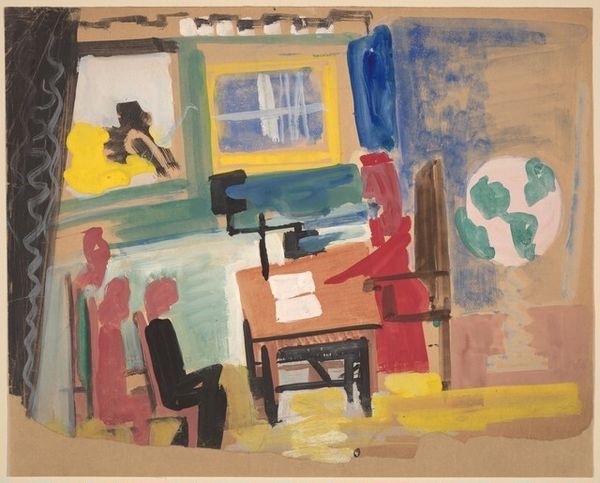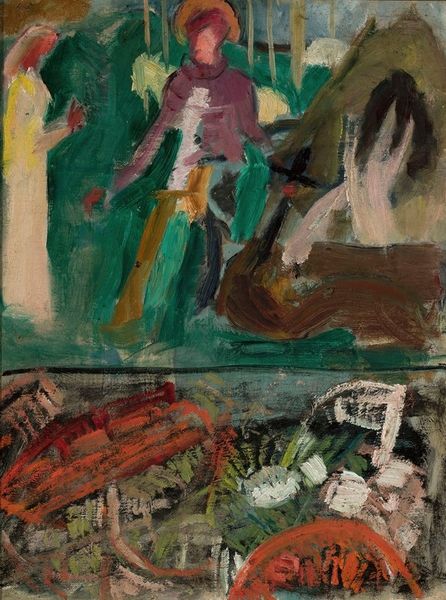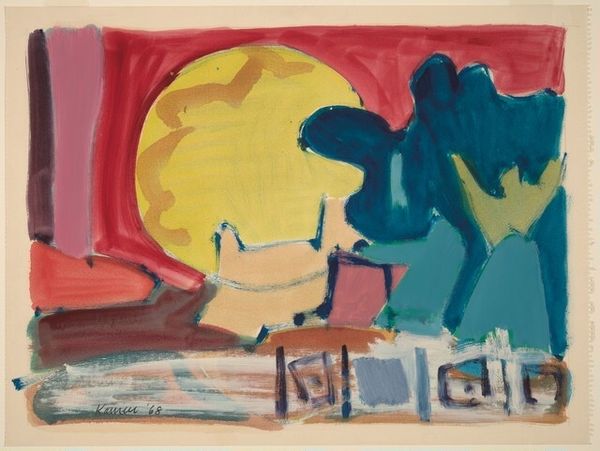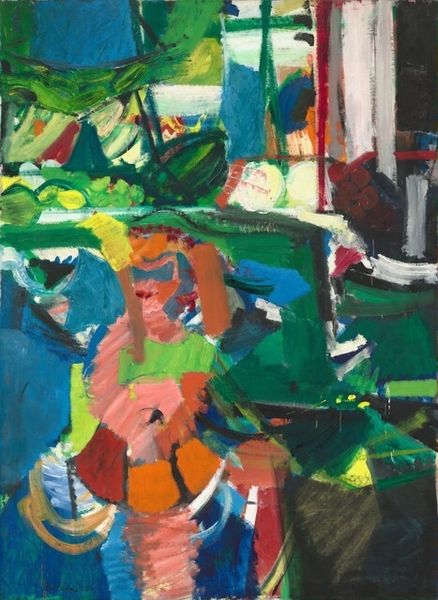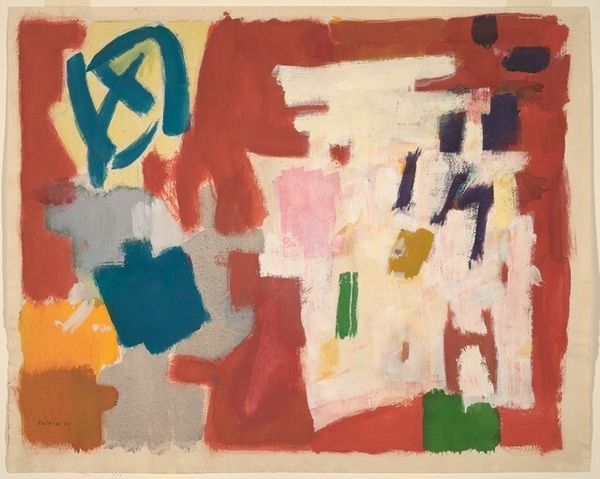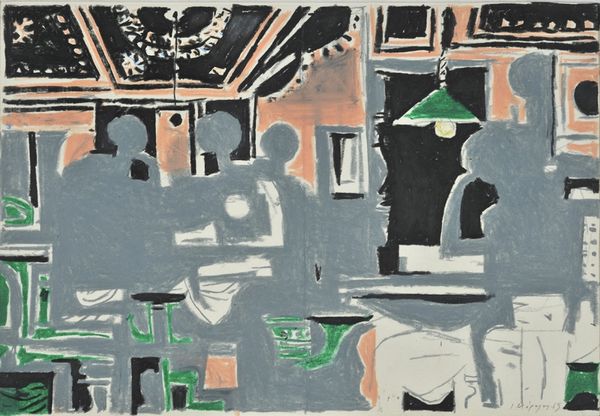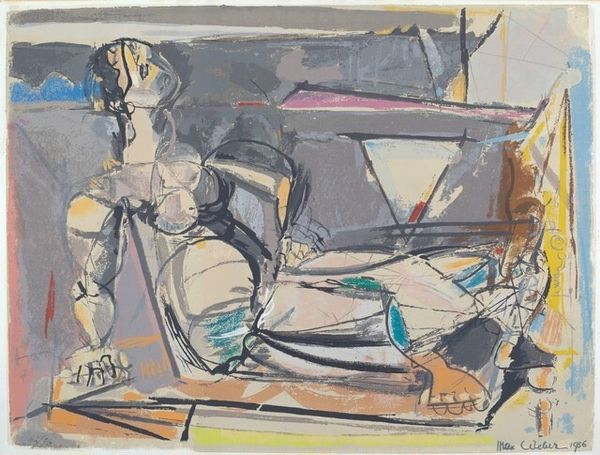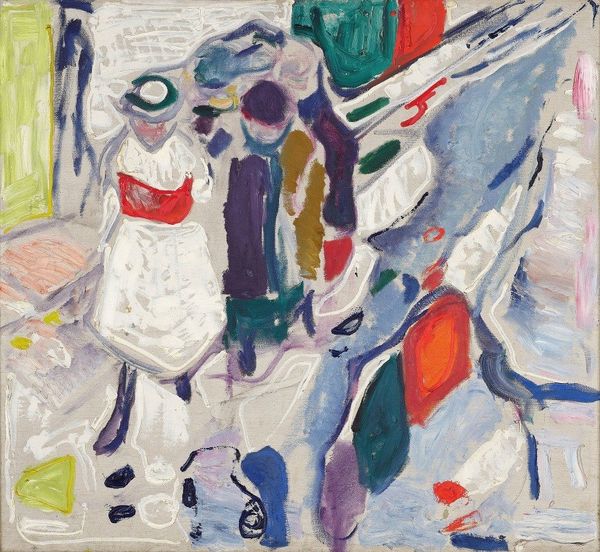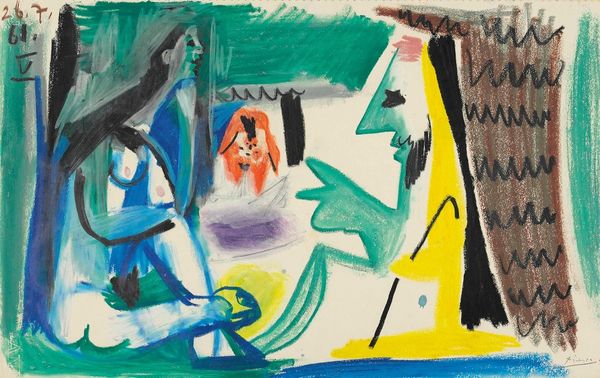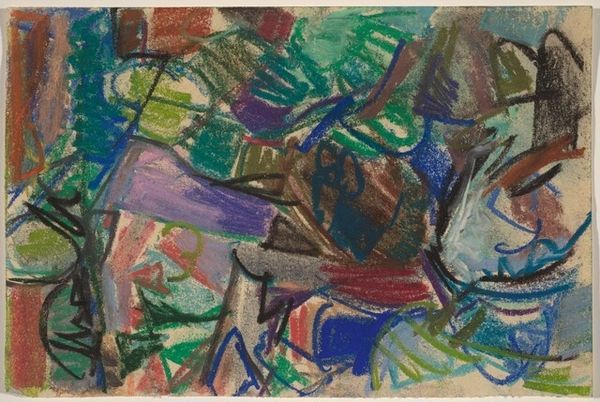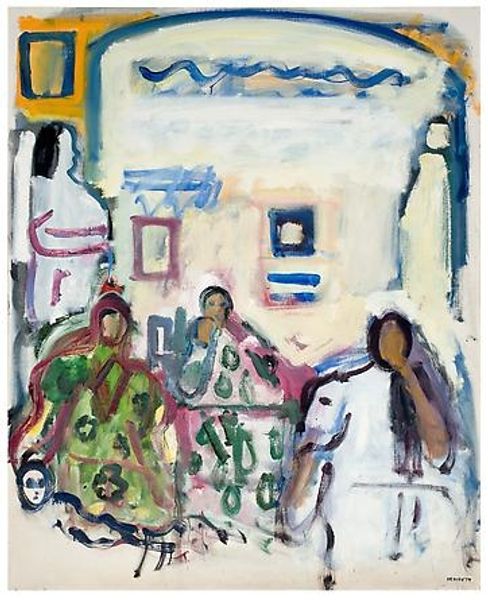
Copyright: National Gallery of Art: CC0 1.0
Curator: Let’s discuss Mark Rothko’s “Untitled (Interior with Figures),” dating to around 1938. It's a mixed-media work – we see both paint and drawing elements on display. Editor: It strikes me as quite chaotic, almost claustrophobic. There's a sense of unease, a gathering, perhaps, but not a comfortable one. The colours, while bright in places, add to that feeling, don’t you think? Curator: It's fascinating to consider how Rothko employs figuration here before his turn to abstraction. You see hints of interiors and social interactions but fractured. The materiality suggests a searching, perhaps restless approach; look at how he layers and scrapes back the paint. What do those layered colors and lines signify in terms of labour? Editor: Absolutely. And think about the historical context, too – the late 1930s. With Europe hurtling toward war, and economic depression gripping the United States, the psychological tension of the time is almost palpable in the skewed perspectives and anxious faces. I think of societal anxiety, feelings of precarity bleeding through into the art produced. Are the distorted figures symbols of disenfranchised individuals in tumultuous times? Curator: Precisely! And that makes me think about Rothko's own biography: as a Jewish immigrant, he would certainly have felt those anxieties keenly. Looking at the application of the materials— the gouache, watercolor, maybe even a touch of oil—do you read a class dimension? The availability, accessibility of materials informs production too, reflecting resourcefulness in challenging circumstances. Editor: A powerful point. The seeming naivety in the application belies the depth of feeling, that very unease we talked about earlier. Perhaps it points to the societal precarity, too, a certain vulnerability mirrored in the artistic process. Rothko grapples with making sense of the present moment, of portraying individuals and groups in fractured social landscapes. It makes us think about the labor of existence itself. Curator: Ultimately, seeing this early work offers a glimpse into the conditions – social, material, psychological – that shaped Rothko’s later, seemingly "non-representational" work. The anxieties are still there, simply translated. Editor: It truly invites contemplation of art's capability to reflect the temperature of the world. I wonder what new conversations it will stir?
Comments
No comments
Be the first to comment and join the conversation on the ultimate creative platform.
